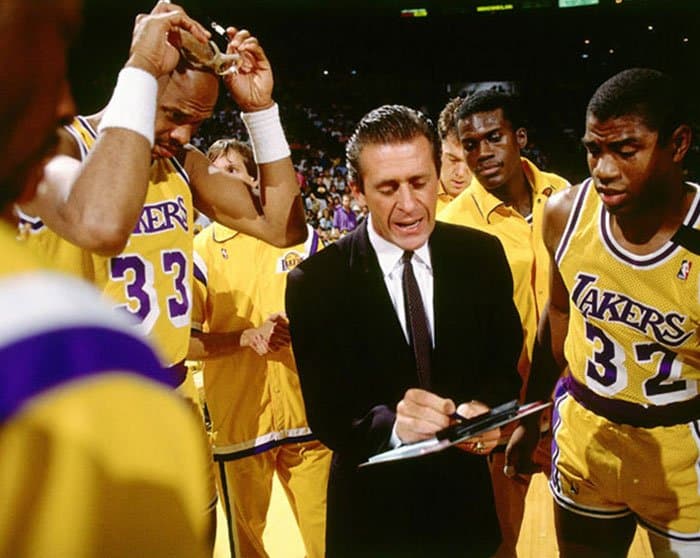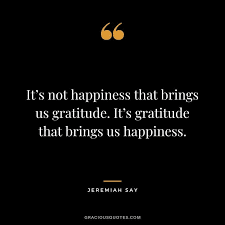Championship NBA Coach Pat Riley described the corrosive effect of success. In his book “Showtime,” Riley unveiled “the disease of more” and argued that “success is often the first step toward disaster.”
According to Riley, after the 1980 Lakers won the championship, everyone shifted into a more selfish mode:

“They had sublimated their respective games to win as a group; now they wanted to reap the rewards as individuals, even if those rewards meant having to spend way too much time at Jack Nicholson’s house. Everyone wanted more money, playing time and recognition. Eventually they lost perspective and stopped doing the little things that make teams win and keep winning, eventually imploding in the first round of the postseason. So much for defending the title.”
You don’t have to win an NBA Championship to be “successful” so the “disease of more” can strike any of us, especially in an affluent and competitive culture like ours.
I can definitely feel the pull toward more.
Here’s one cure for “the disease of more”:
Have you ever seen a grown man grateful?
I’ll never forget the first time I saw a grown man express deep, heart-felt gratitude. I was 10 years old and it shook me. That wasn’t normal in my world. Grown men didn’t express real, authentic gratitude. My friend Ron was different. He was GRATEFUL. Not only for the big things, but all the little things too and for people. He would express this at every turn, whether thanking you for a kindness or the gratitude he felt while enjoying a beautiful vista on a hike, or gratitude for the granola we were eating on that hike. He would regularly pull over while we were driving, to point out something amazing and express awe, wonder, and gratitude like two bald eagles flying at sunset, or a snow-peaked mountain in the distance.

An Ode to Gratitude
Think of “thankful” as a feeling, and “gratitude” as an action. You express gratitude. You give gratitude.
People who are “ungrateful” are often called “ingrates.”
Gratitude changes both the giver and the receiver (it’s infectious!). Gratitude never runs out (there’s an endless supply available!). Gratitude automatically puts us in a posture of humility. Gratitude gives us clarity – around what’s most important, and about what we have. Gratitude is a muscle we can exercise just like any other muscle. Gratitude can become an ingrained habit. Gratitude takes practice.
Here are some tips and tricks I’ve found for spreading and expressing gratitude:
-
Make it a habit to regularly write Thank You notes (handwritten!). Developing this habit has helped me hone a “gratitude radar”, being attuned to people and things I’m grateful for that I normally would have blazed over.
-
Thank the Chef. Will Gray taught me this one (thanks Will!). If you enjoy a meal, whether at home or a restaurant, personally thank the chef!
-
Start team meetings and 1-on-1’s with a Gratitude Moment. We do this in 80% of our meetings at CloudSherpa, both internal and external, and it’s amazing how it centers us and reminds us of what’s important.
-
Bookend the day with Gratitude. On my best days I’ll roll out of bed and thank the Lord for giving me a new day and life. For the past 6 years our family has ended the day with “a Thankful” – each family member including our 3 year-old will share a gratitude from the day.
Gratitude is never done, and we can be endlessly creative about what we’re grateful for.
For example, this guy A.J. Jacobs sat down one morning to enjoy a nice cup of his favorite hot coffee. He started thinking and realized that the cup of coffee he was drinking came as a result of many many people working hard and diligently. There was the person who grew the coffee and supplied the seeds to the farmer. There was the delivery person, the roaster, and the individual who made the burlap sacks for transport. There was the barista and the person who made the coffee machine.
In all, Jacobs found over 1,000 different roles would have been responsible for him enjoying that cup of morning joe. He felt thankful, but he didn’t stop there. He decided to try to personally express his gratitude to each individual in that chain. He did that, and wrote a book about – Thanks a Thousand. Check it out below.
As we enter this amazing season of Thanksgiving, where might you begin to strengthen your Gratitude muscles, begin to develop habits of Gratitude, and start spreading the infectious joy that gratitude brings to us and those around us?